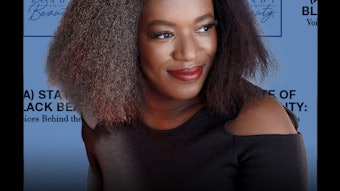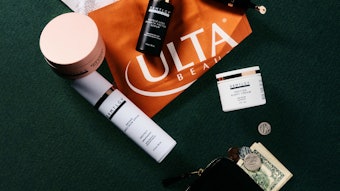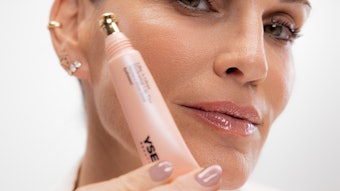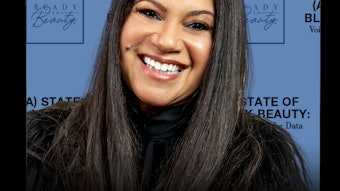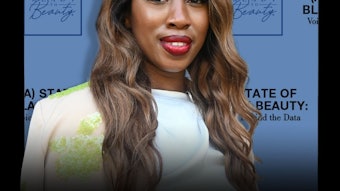- Your brand’s story is a key to your whole marketing existence—which is why you need to take care that you are telling it right.
- Take the time to get your story right. Thinking about the elements you want to include in your brand’s story shouldn’t be rushed.
- Test your story with your consumers. Nothing can replace the firsthand feedback you can get from your target market.
I have been telling stories since I was old enough to talk. Ask anyone who knows me, and they will likely say I was born to be a storyteller. And after nine years working in the beauty business, there is one fact I know to be absolute: like me, every beauty brand has a story. Simple or detailed, short or long, old or new—all brands have something to say and a compelling and emotional story to share.
However, that doesn’t mean all stories are created equal. Although they remain one of the most strategically important branding elements and are required, brand stories often aren’t executed with the excitement and creativity needed to make the right impact on the two groups who matter most: consumers and retailers. To me, a successful brand is a story well told, period.
After writing and rewriting hundreds of brand stories throughout the years, I have identified the seven deadly sins of story writing I see most often. So put on your editor glasses and get out your red pens. It’s time to start writing a better brand story.
Sin #1: Your Story Is, Well, Boring
Today, there are more beauty brands than ever vying for your consumer’s attention, which means quickly grabbing her interest and keeping it is important and hard. Your brand’s story has to sing from the first hello.
But before you pick up your pen or sit down in front of your computer screen to start writing, take a moment to ask yourself, “What is special about my brand?” And not special in terms of the typical “special” things all brands claim (“Our moisturizer hydrates the skin like nothing else!”) but interesting from that unique, ownable place only your brand can occupy. Is it your origins or your founder? Your name? An interesting quirk about one of your ingredients, or how the product is delivered to the skin?
Once you have that answer, write about it. And write about it in a way that is fun, engaging and compelling, but not too jargon-y. Relying on overused industry jargon may seem like the way to go to be competitive, but the truth is, consumers don’t want to read the same old thing again and again. Instead, you want some fun nugget or point of difference that makes consumers stop, pay attention and, ultimately, purchase. Every winning brand I’ve ever encountered has this edge, so take some time to discover it before you begin writing.
Sin #2: Your Story Is Too Complicated
Having just told you to dig deep and find those fun brand elements that are unique to you, I’m now also going to tell you to be judicious in how you implement them. If you have a scientifically validated research technique for extracting your 14 key ingredients that is patented four times in three countries after five decades of research, that’s wonderful—but you need to figure out early on which of those messages is going to be your lead driver, and then lead with it.
Trying to squeeze every single detail into your story is understandable, but that ultimately runs the risk of creating confusion for your retailers and consumers because everything just seems too complicated. At the end of the day, your consumer does want to know all of the details that make your brand unique, but first and foremost, she just wants to know how does it work and is it for me. Tell her these things clearly and succinctly upfront, and save the rest of the story for your website and collateral marketing.
Sin #3: Your Story Is Too Similar To Someone Else’s
I’ve often thought there’s an interesting reality about beauty brands that is easy to see yet not so easy for any of us admit, and that is, basically, we’re all telling remarkably similar stories. After all, the core message of most skin care is it treats the skin.
For example, take cleanser. Whether your formula cleanses with special micro-bubbles or powers away dirt with a multi-enzyme foam, the basic promise of a cleanser is that it cleanses, and in one way or another, this is what we all write in our stories.
However, there’s a fine line between saying something similar and saying something too similar. Telling your brand’s story too closely to an already-existing brand story is the kiss of death. Not only do you run the risk of infringing on another brand’s intellectual property (and potentially, legal action), but closely hitching your story onto another brand’s story creates affinity in the consumer’s mind for your competition—not you.
Sin #4: Your Story Doesn’t Really Tell A Story
Although it’s hard for me to believe that any beauty entrepreneur or brand could struggle with finding their story, it happens—and it happens often. Usually when it happens, it means one of two things: either the story is muddled with too much confusing information (see upcoming Sin #5) or the story is stripped bare of almost all critical information and basically doesn’t say anything at all.
When it comes to enchanting your beauty consumer, imagination and ingenuity is key, and a story that doesn’t tell a story but only seems to relay dry facts will only achieve one goal: losing her interest. And likely her loyalty. Like I mentioned, consumers love to be entertained, so entertain them. Dismiss the mundane facts that everyone states and dig deep for the story you haven’t told—or heard—yet, and then apply a healthy dose of creativity to rethinking how you share it.
Does your body cream contain a special plant infusion, or is your shampoo scented with a rare blossom? Good. Fall in love all over again with what is unique about these details and then write about it.
Sin #5: Your Story Tells Too Many Stories
Sin #5 is similar to Sin #2, offering too much information. But in this case, it’s just too many stories vying for attention. A well-crafted brand story offers consumers a clear point of difference about the brand they can rally around in an exciting, motivational and highly differentiated way. Trying to cram every detail about your brand into this story can (and will) kill even the best idea.
I know that for most beauty entrepreneurs, every detail of their brand seems crucial and important. However, when it comes to sharing this information with consumers, every detail simply can’t be a major part of the story. So, your brand is a line of skin care for mature women that also focuses on acne... and sun protection and anti-aging... and, oh yeah, basic skin care and prevention and education? That’s a tall order, and asking a lot of your consumer. With an attention span that allots about three seconds per decision while shopping, few consumers have enough time to try and make sense of so many messages. At first blush, she needs to know why this is the product for her, and that then gives you the entry point for introducing those other neat, important details of your brand that will seal the deal.
Sin #6: Your Story Lacks Emotion
Speaking of sealing the deal, one of the chief reasons beauty brands fail with consumers is they simply do not make that critical emotional connection that consumers crave. What’s one of the best ways to make this connection? That’s right, your brand story. And both inside and outside the beauty industry, the most successful brands tap into an emotional connection. Nike wasn’t banking on logic with their iconic “Just Do It” tagline—that is pure emotion driving consumers to stop whining, lace up their Nike sneakers and get going. The same can be said of L’Oréal’s “Because You’re Worth It”—every woman wants to be worth the effort to look and feel her best, and L’Oréal expertly trades on this emotion to create a connection with women.
After having written and read dozens of brand stories, I know that no matter how large or small, every brand has a glowing emotional core that needs to be celebrated. Tap into the reasons why you started the brand—the heritage or the founder’s story, your ingredients, methodology or technology, or even your place of founding—and polish that angle until it shines. Even the most scientific brand has an emotional heartbeat that can, and should, connect with consumers.
Sin #7: Your Story Wasn’t Tested
Finally, the ultimate sin is assuming you already know what your consumer likes and thinks of your beautifully crafted story. As beauty executives and brand managers, I know it’s deceptively easy to believe what we write will automatically resonate with consumers—but the truth is, until you ask her, you really don’t know. And assuming (or presuming) you do based upon anything other than cold, hard facts can be an expensive disaster waiting to happen.
The final part of the story development process is testing your brand’s written story with consumers. This gives you critical consumer insight and perspective into the very messages you want to resonate the most. It also helps you discover if you’ve committed any of the other six deadly story writing sins before you finalize these elements and make them your brand’s creed.
At the end of the day, the biggest question you need to be able to ask—and answer—about your brand story is really quite simple: Would you buy your brand based upon your story? If the answer is no, time to get out your pen and start rewriting.
A proven entrepreneur and visionary, Alisa Marie Beyer has built and sold three companies and is now the founder and creative director of both The Beauty Company (TBC) and Coastal Salt & Soul. The Beauty Company is a strategy firm that lives, works and dreams at the intersection of beauty, business and creativity. For TBC, beauty isn’t just a project, it’s a passion, and it uses an award-winning approach to create beauty and personal care products that deliver beautiful yet functional solutions carefully attuned to the realities of a particular business. Whether a new indie darling or established corporate visionary, TBC’s unique understanding of what consumers want, need and desire lets it secure both sell-in and sell-through at retail. TBC specializes in research, product and brand strategy. The company has worked with start-ups to 13 of the top 15 beauty companies globally and has a proven and award-winning track record in cosmetics, skin care, beauty devices, body care, hair care, nail care, fragrance and wellness/personal care.
